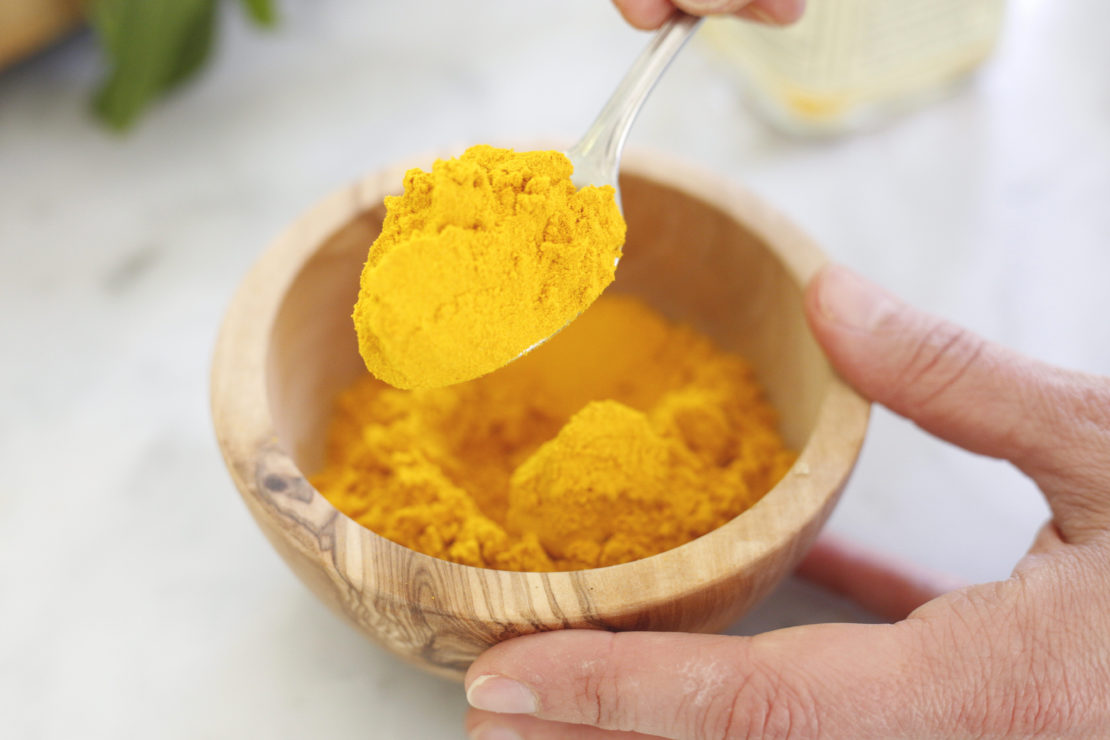
The Top 5 Ayurvedic Kitchen Spices to Keep In Stock
If you love spicy food, then perhaps you instinctually appreciate the aromatic, colorful allure of well-spiced cuisine. For some, the draw is innate; there is something so enticing about the crimson kick of cayenne (Capsicum annuum) and the warming brown of cinnamon, not to mention that lovely golden hue that turmeric brings to a curry. However, spices add much more to food than color and flavor. If you like spices, it is for good reason. Not only are spices tasty, they are right up there with organ meats in terms of nutritional density (Palanisamy, 2015)! Vegetarianism aside, I don’t know about you, but I’ll take spices over organ meats any day! Few other foods are as chock full of vitamins, antioxidants, and other beneficial constituents as spices. They are treasure troves of flavor and nutrition.
This article will explore five of the best Ayurvedic kitchen spices to keep in stock in your kitchen. I have selected these particular spices primarily because of their importance in traditional Ayurvedic cooking and herbalism. However, there is also significant modern scientific research to support the validity of the uses of these spices passed on in ancient Ayurvedic teachings.
Top 5 Ayurvedic Kitchen Spices
Cinnamon (Cinnamomum verum)
Cinnamon is one of my favorite fall Ayurvedic kitchen spices. I am sure many of you can relate to the cozy feeling that a cinnamon-dusted dessert invokes. Due to its warming qualities, cinnamon is an especially great spice for the fall and winter. However, when you know about all the wonderful things that cinnamon can do for your body, it may be a spice that you’ll want to enjoy all year round!
According to Ayurveda, cinnamon possesses a combination of the sweet, pungent (spicy), and astringent tastes. It has a warm energy, and like most spices, a purifying effect on the body. Due to its warming nature, cinnamon pacifies both vata and kapha doshas and raises pitta dosha. Cinnamon stimulates agni (the digestive fire). This wonderfully sweet, warming, aromatic spice also benefits circulation and is known for its capacity to help balance blood sugar. In addition, cinnamon shows promise as part of a polycystic ovary syndrome (PCOS) protocol, which is likely due to its ability to regulate blood sugar and to reduce insulin resistance — abnormalities that may be an underlying cause of PCOS (Palanisamy, 2015).
Furthermore, cinnamon has a slightly demulcent (moist) quality. This moistness combined with sweetness help balance its heat, making cinnamon a less intense spice compared to cayenne. Both cinnamon and cayenne stimulate circulation. However, cinnamon is generally the better option for those with a delicate constitution, e.g., vata types, as it is not as drying and is less severe in its heating action.
Cinnamon has traditionally been used in Ayurveda to soothe coughs, colds, congestion, and to promote sweating. Cinnamon may also be useful in alleviating excess gas, easing the digestion of heavy foods, and increasing the absorption of nutrients (Dass, 2013). As someone who runs cold, I have personally found cinnamon to be helpful for promoting circulation and for encouraging a more comfortable menstrual cycle. This is due to its blood moving capacity.
It is worth noting that there are a couple of different plant species known as cinnamon: Cinnamonum verum also known as Cinnamomum zeylanicum, “true cinnamon,” and Cinnamonum aromaticum, “cassia.” These different types of cinnamon have almost identical physiological benefits. However, cassia can pose a risk to liver health due to the high levels of coumarins if taken in high doses (more than 1 teaspoon per day) (Palanisamy, 2015). Therefore, if you are taking cinnamon as a supplement, it is wise to choose Cinnamonum verum.
In terms of safety, it is not advised to supplement with cinnamon while pregnant or breastfeeding or in the couple of weeks prior to surgery. However, cinnamon is perfectly safe when used in small amounts in baking and cooking (Palanisamy, 2015).
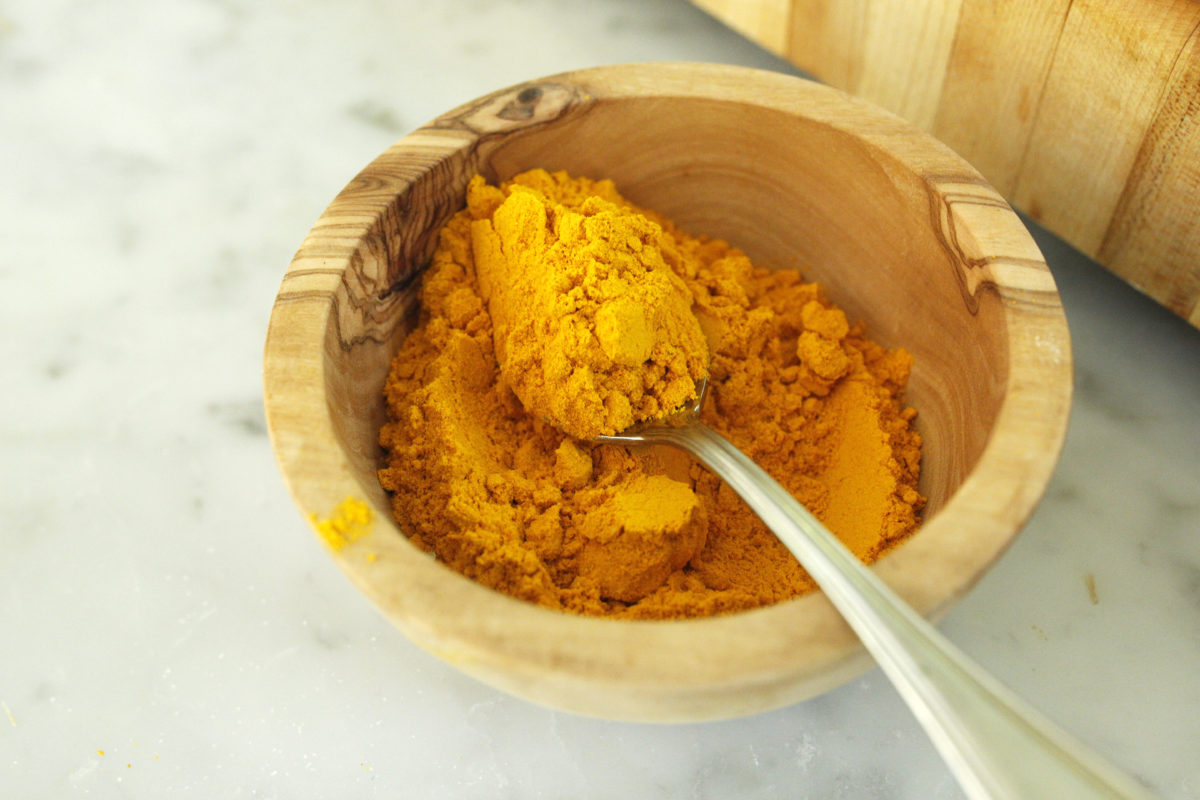
Turmeric (Curcuma longa)
Turmeric has gained much popularity in the past several years. As an Ayurvedic practitioner, I generally don’t believe in a one-size-fits-all approach. However, I had a good chuckle when I recently saw an Instagram post from a colleague that read, “I’ve got 99 problems, but turmeric solved like 86 of them.” Turmeric may not be the fix for everything, but it comes pretty close to offering something for everyone.
In Ayurveda, turmeric has traditionally been used as a digestive, alterative, cholagogue, anti-inflammatory, and antimicrobial. Furthermore, there is significant research to indicate that it has efficacy in the case of cancer and Alzheimer’s. One randomized placebo-controlled double-blind study demonstrated that turmeric rivals non-steroidal anti-inflammatory drugs (NSAIDs) in its ability to effectively lessen joint pain (Kuptniratsaikul et. al, 2014). A number of other studies have similarly proven turmeric’s anti-inflammatory prowess (Palanisamy, 2015). On the whole, turmeric is one of the most broadly researched spices.
Turmeric also adds a lively, bright yellow hue to any dish. This golden-orange root is a staple of Indian and Ayurvedic cooking. Turmeric helps break proteins down during the digestive process and is, therefore, an ideal ingredient in legume dishes (Dass, 2013). As a practitioner, I often suggest turmeric for clients who have skin and liver congestion, which may manifest as acne, PMS, and/or irritability. This is because of turmeric’s function as an alterative and cholagogue, meaning that it has blood-cleansing properties and helps stimulate the flow of bile from the liver.
Turmeric is warming in nature, so those who run warm may want to take it alongside cooling botanicals such as aloe vera, coriander, or rose. Also, taking turmeric with a little black pepper (Piper nigrum) and a lipid (such as ghee) increases its bioavailability by 2,000% (Palanisamy, 2015)! This is why cooking with turmeric is so valuable — you are much more likely to get a superior absorption of turmeric by frying it in ghee or another oil and adding some black pepper.
Many of the benefits of turmeric can be obtained by simply cooking with it on a regular basis. However, there are times when taking a concentrated turmeric supplement is called for. I have personally found turmeric extract to be a useful supplement in dealing with acute muscle and joint-related pain and inflammation. Turmeric Force by New Chapter is a good option because a special carbon dioxide process is used that produces a full-spectrum root extract.
On another note, it is quite popular nowadays to supplement with only curcumin. While you will likely get benefits from this option, there are many other beneficial constituents in turmeric beyond curcumin. Depending upon your desired outcome, supplementing with the full-spectrum root extract may be preferable to taking an isolated curcumin extract.
Turmeric is generally safe when used as a cooking spice. However, it does have blood-thinning properties, so those on blood-thinning medications and those who are undergoing surgery should consult with a physician before taking a turmeric supplement. The same holds true for those with diabetes and those with active liver disease and gallstones. Pregnant and breastfeeding women should also avoid turmeric supplements, but it is safe to use in cooking (Palanisamy, 2015).
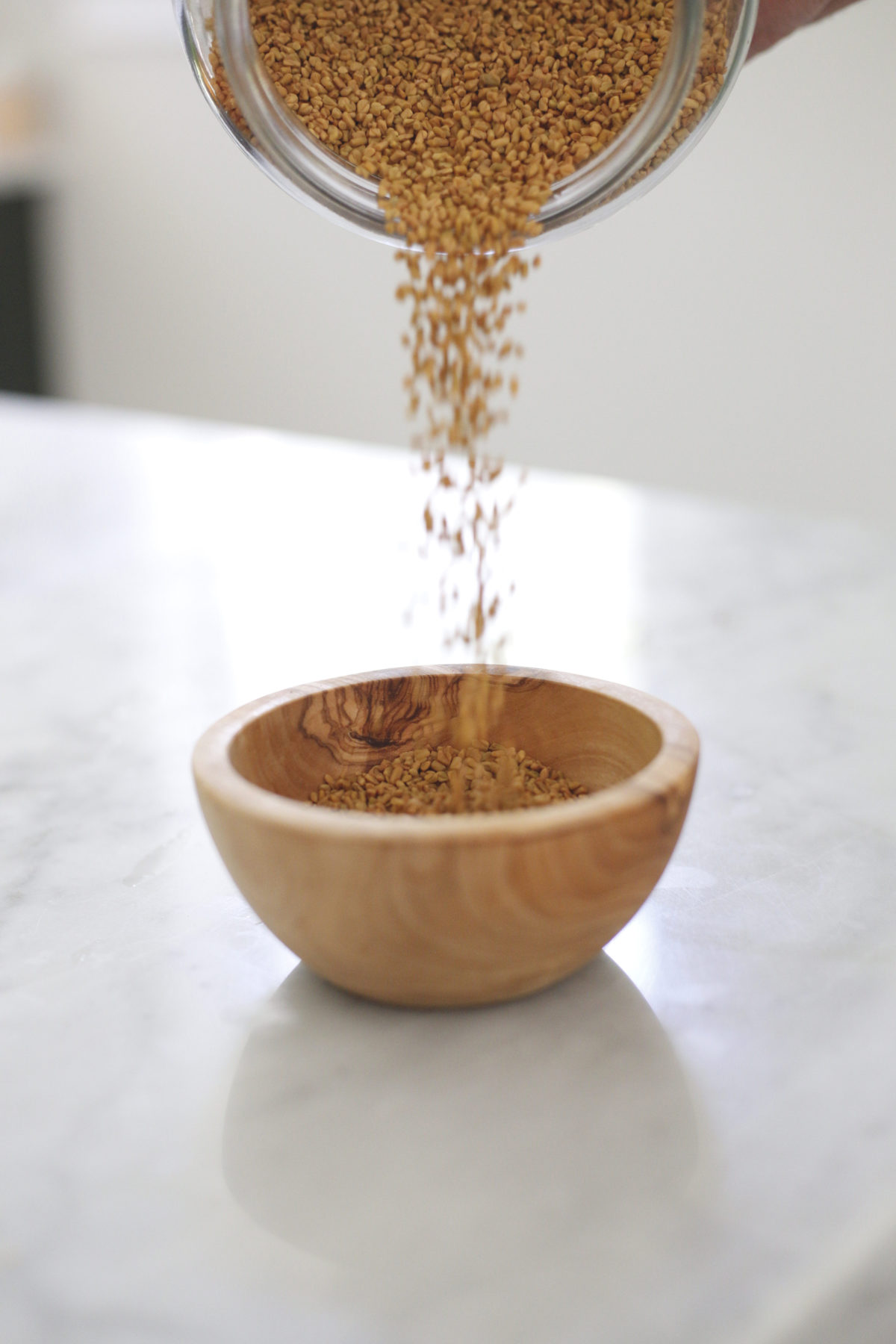
Fenugreek (Trigonella foenum-graecum)
Fenugreek is often used in Indian cooking but is lesson common in Western cuisine. However, there are numerous reasons for Westerners to incorporate fenugreek into their cooking more often!
These little yellow-beige seeds have a sweet, pungent, and bitter taste, a heating energy, and a purifying effect on the body (Dass, 2013). While you can use the whole seeds to make a tea, it is common to use the seeds as a ground powder in cooking. Adding whole, dry fenugreek leaves to stir-fries and curries is also quite nice and is a convenient, no hassle way to cook with fenugreek.
Fenugreek has a surprisingly sweet smell that is reminiscent of maple syrup. Another oddity of fenugreek is that if you eat it in large quantities your sweat will start to smell like maple syrup!
Although sweet in scent, fenugreek has a slightly bitter and savory taste. Also, interestingly enough, there are a number of scientific studies that demonstrate fenugreek’s ability to balance blood sugar levels and to lessen insulin resistance (Neelakantan, Madanagopal, De Souza, & Van Dam, 2014). According to Ayurveda, fenugreek stimulates agni, clears ama (particularly from the small intestines), alleviates sluggish digestion, and is generally vata and kapha pacifying (Dass, 2015). Ayurvedic practitioner Vishnu Dass recommends preparing fenugreek seeds as a tea (either in whole or powdered form) with a bit of honey to help clear sinus congestion.
Fenugreek has also been classically used in Ayurveda as a galactagogue, meaning that it helps promote the flow of breast milk in lactating women. It is also regarded to have general tonifying properties, particularly for the reproductive system (Dass, 2013).
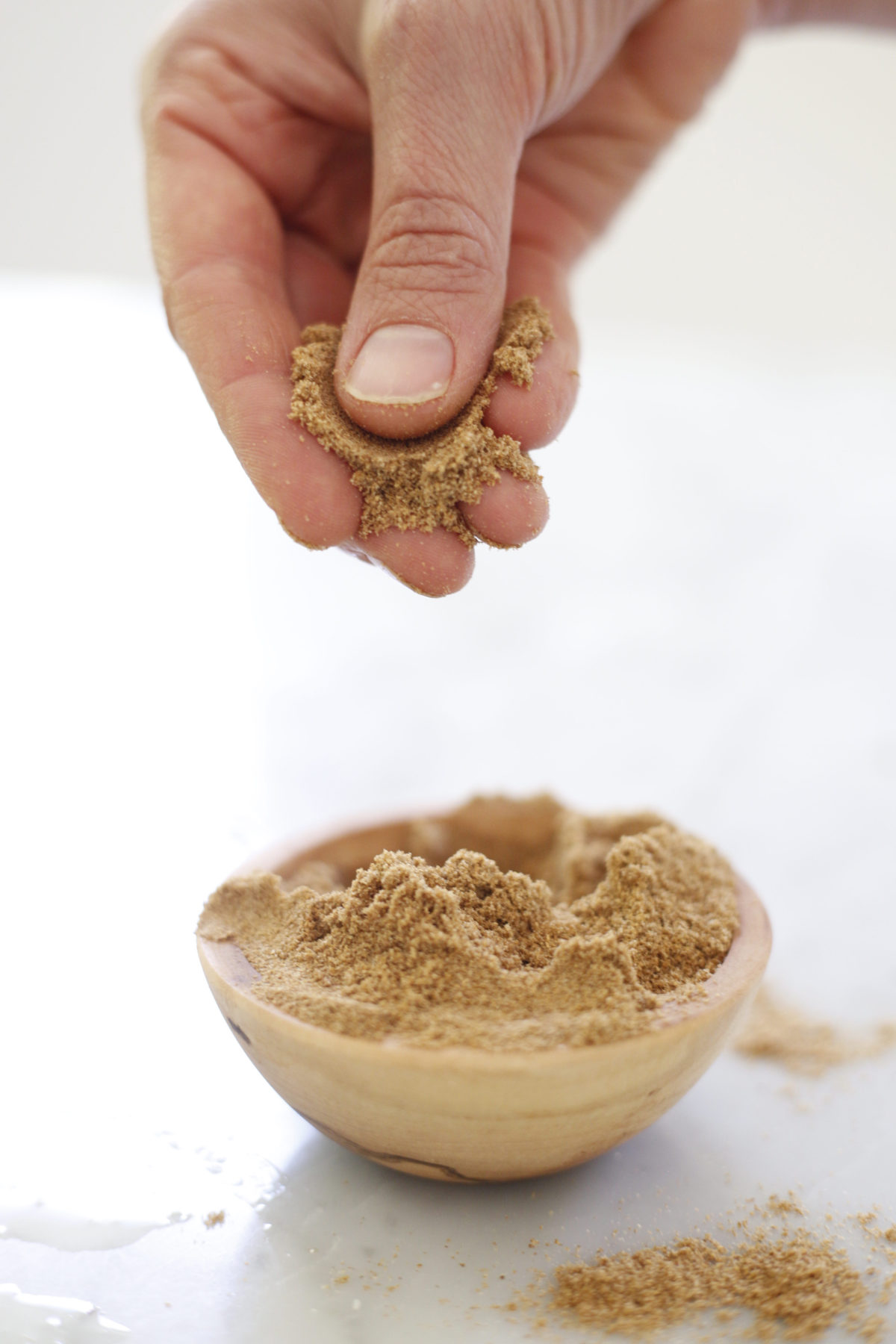
Coriander (Coriandrum sativum)
Since most spices are energetically warming, I wanted to be sure to include at least one cooling spice in our list of Ayurvedic kitchen spices. Coriander is one of the premier pitta pacifying spices. Coriander is commonly used in the cuisines of India, as well as Europe, Asia, Latin America, and the Middle East. The ground seeds can be incorporated into a variety of dishes. Cilantro, the leaves of the coriander plant, have their own beneficial properties as well.
According to Ayurveda, coriander has a pungent and bitter taste, a cold energy, and a purifying effect on the body (Dass, 2013). Coriander can be used in cooking to promote digestion without aggravating pitta, as it encourages the assimilation of nutrients but does not overheat the body. In fact, coriander is indicated for soothing hives, rashes, and skin inflammation. In these cases, the ground coriander powder can be taken as a simple tea infusion. Furthermore, if you add a squeeze of lime to your coriander tea, it may help ease nausea (Dass, 2013).
You can also juice cilantro leaves and either drink the juice or apply it topically. Ayurvedic practitioners recommend this application of coriander for easing red, inflamed skin (Dass, 2013). A bit of chopped cilantro leaves also balances the heat of spicy hot dishes, hence its popularity as a garnish in Mexican and Indian dishes.
Lastly, coriander may be used for supporting a healthy urinary system. In Planetary Herbology, herbalist Michael Tierra (1988) writes about coriander’s usage in strengthening the urinary tract. This may be due to its capacity as a diuretic as well as the antimicrobial properties of the seeds.
One other classic use for coriander is the traditional Ayurvedic tea infusion, CCF (coriander, cumin, and fennel) tea. This beverage is usually decocted using whole coriander (Coriandrum sativum), cumin (Cuminum cyminum), and fennel seeds. CCF tea is known for its ability to gently enkindle the agni (digestive fire) and burn ama (metabolic wastes or undigested food matter). Ayurveda considers CCF tea to be tridoshic, meaning that it is suitable for all three constitutional types—vata, pitta, and kapha.
CCF tea is commonly sipped during Ayurvedic cleanses because it assists the body in its natural detoxification and filtration processes. However, CCF tea is mild enough that it can be enjoyed any time. You can find the recipe for CCF tea in this post, Ayurvedic Tips For Spring Wellness.
As you can see, if you are of pitta nature, or are dealing with a pitta-type imbalance, coriander and cilantro may be just the spice for you! Coriander poses very few health risks. It is generally quite safe to use in cooking. Also, for those who dislike the taste of cilantro leaves, coriander seeds may not provoke the same unsavory effect on your taste buds.
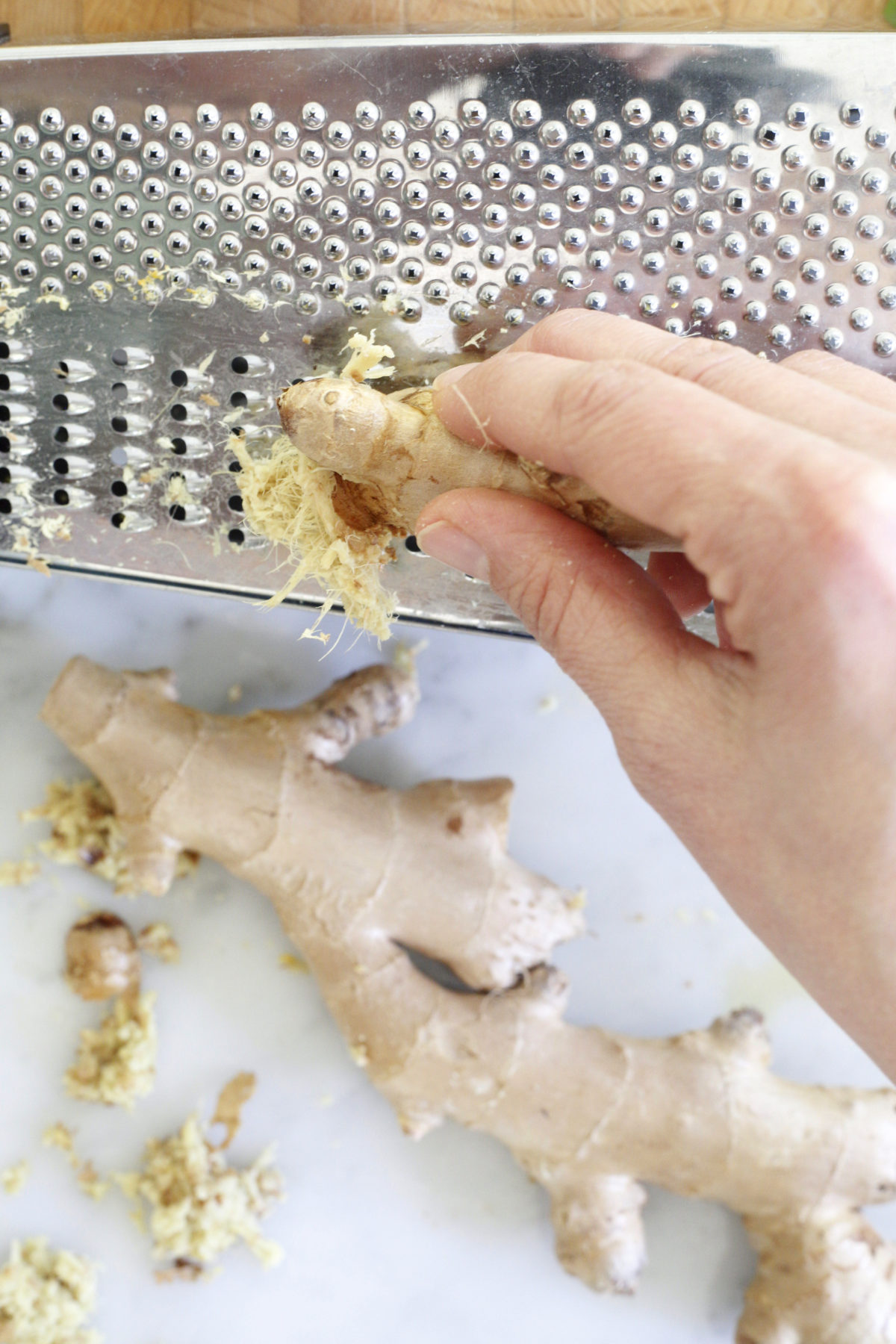
Ginger (Zingiber officinale)
It wasn’t easy to pick the top five Ayurvedic spices, as there are dozens of spices with incredible benefits. However, ginger has earned its rightful place on the shortlist. Ginger is not only a tasty spice essential and a staple of Ayurvedic cooking, like turmeric, its applications in both cooking and herbalism are vast.
The fresh root possesses a great combination of the sweet and spicy tastes, has a heating energy, and has a nourishing effect on the body. The dry root has slightly different energetics, but it is equally as useful. Dry ginger has a pungent and sweet taste, a heating quality, and a purifying effect on the body.
Both fresh and dried ginger are among the most revered digestives in Ayurveda. Ginger has a special ability to gently encourage peristalsis, thus helping food matter move in a more timely fashion through the gastrointestinal tract. This is particularly helpful in cases of nausea, bloating, and general indigestion.
Herbalist Michael Tierra (1988) describes dry ginger as being an internal warming stimulant, whereas fresh ginger is more of a warming diaphoretic — meaning that it helps induce sweating. Likewise, Ayurvedic practitioner and herbalist, Vishnu Dass (2013) describes the dry root as being an internal warming agent and the fresh root as being surface relieving. Dass also describes ginger as a vishwabhesaj, or “universal medicine.” This is because of its usages as a digestive, circulatory tonic, stimulant, and diaphoretic.
Ginger also has substantial anti-inflammatory properties. A number of studies demonstrate ginger’s effectiveness in alleviating some of the pain and inflammation associated with arthritis. Other studies have demonstrated ginger’s usefulness in lessening menstrual pain as well as exercise-induced muscle pain (Black, Herring, Hurley, & O’Connor, 2010).
Like the other spices on this top five list, ginger is generally safe to use as a cooking spice. However, it does have the capacity to thin the blood, so those on blood-thinning medications should use caution with large amounts of ginger. The same applies for pre-operative patients. Also, those on diabetes medications should consult with their physician before taking ginger supplements (Palanisamy, 2015).
Get Thee to the Kitchen!
This article could have easily included ten, twenty, or thirty spices. The list of beneficial spices in Ayurveda is both vast and deep. As you can see, many common kitchen spices are some of our greatest allies in our journey to optimal well-being. If you already cook with spices, I hope that you will uncover a newfound appreciation for those little gems of nutrition that are hiding out in your spice cabinet. If you are new to cooking with spices, this list of the top five is a great place to start! Some other spices that you may want to consider researching and adding to your materia medica are cayenne (Capsicum annuum), clove (Syzygium aromaticum), cardamom (Elettaria cardamomum), saffron (Crocus sativus), nutmeg (Myristica fragrans), allspice (Pimenta dioica), and asafoetida (Ferula assa-foetida) to name a few. I hope that by exploring five of the most essential Ayurvedic spices, you are newly inspired to taste, test, play, and experiment in the kitchen!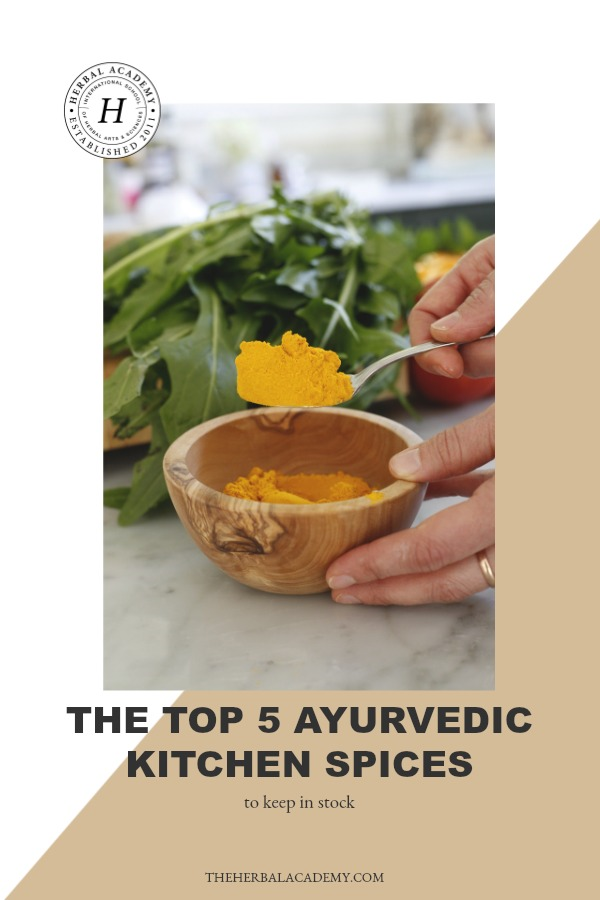
REFERENCES
Black, CD., Herring, MP., Hurley, DJ, O’Connor, PJ (201). Ginger (Zingiber officinale reduces muscle pain caused by eccentric exercise. Journal of Pain 11(9): 894-903. doi: 10.1016/j.jpain.2009.12.013.
Dass, V. (2013). Ayurvedic herbology. Twin Lakes, WI: Lotus Press.
Kuptniratsaikal, V., Dajpratham P, Taechaarpornkul W, Buntragulpoontawee M, Lukkanapichonchut P, Chootip C, Saengsuwan J, … (2014). Efficacy and safety of curcuma domestica extracts compared with ibuprofen in patients with knee osteoarthritis: a multicenter study. Clinical Interventions in Aging 9 451-8. doi: 10.2147/CIA.S58535.
Neelakantan, N., Madanagopal, N., De Souza, R., and Van Dam, R. (2014). Effect of fenugreek (trigonella foenum-graecum l.) intake on glycemia: a meta-analysis of clinical trials. Nutrition Journal 13:7 https://doi.org/10.1186/1475-2891-13-7
Palanisamy, A. (2015). The paleovedic diet. New York, NY: Skyhorse Publishing.
Tierra, M. (1988). Planetary herbology. Twin Lakes, WI: Lotus Press.









